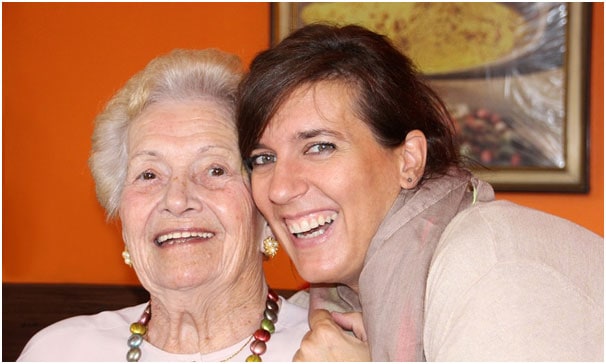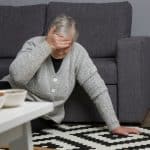
Senior safety awareness is more critical now than ever. The percentage of the population that are seniors is rising, as is the average life expectancy and the number of people over 80 years old. The fact that the population is becoming dominated by seniors means that a large part of the population is at increased risk of being the victim of a crime or accident while living at home. Therefore, the general public should be more aware of how to make a senior’s environment safer, what resources and technology can help with this process, and how to spot the warning signs that further measures are needed to ensure a senior’s safety. In addition, having a safety net such as a medical alert device can assist in emergency situations. The Life Alert cost is affordable when you factor in the savings of aging in place.
Identifying Hazards
As people reach advanced ages, their physical and mental capabilities tend to deteriorate, making it harder for their loved ones to keep them safe at home. However, preventative measures can be taken if potential hazards in a senior’s home are identified before they become a problem.
As people age, even a slight loss in mobility and flexibility can create hazards where there once were none. Such risks include difficulty getting out of bed, slipping while bathing, knives or other clutter on countertops causing cuts and bruises, or even the loss of balance while standing.
Mental deterioration is also common in seniors, resulting in confusion or disorientation. Many seniors become wander risks since they will often leave their home and then realize that even though they are still close to their house, their surroundings are unfamiliar, and become lost. A lost senior can encounter any number of dangerous situations at this stage.

Addressing Hazards
Many of the scenarios discussed above can be avoided if steps are taken to make the senior’s home safer and more compatible with their needs. Many of these measures are quite simple and easy to implement.
Fall-Proofing
Seniors tend to lose their balance more easily as they age, so it’s essential to remove as many obstacles as can be identified. Since eliminating all obstacles is impossible, it’s also important to have measures in place if a senior does fall, like making sure they are wearing a medical alert device. Fall-proofing can be done by:
- Installing railings and grab bars in the bathroom, kitchen, or even the bedroom to help maintain balance
- Providing a shower seat to reduce fatigue while bathing and thereby reduce the risk of falling
- Cleaning up clutter to prevent tripping
- Removing or securing loose rugs to reduce the risk of tripping
- Providing non-slip mats in rooms and bathtubs to prevent slipping while walking or bathing
Adequate Lighting
Many seniors experience worsening vision; therefore, any measures that can be taken to improve visibility and make any hazards easier for the senior to see will make the environment safer.
- Ensure halls and rooms are well-lit
- Add night lights to available outlets if the person is active at night
Fire Prevention
It’s important to make sure any home is adequately protected from a fire, however, it is even more essential to take precautions with a senior’s home because of their reduced mobility. Elderly adults are at increased risk of dropping or knocking something over and causing a fire, and they also have a reduced ability to escape a fire.
- Install smoke detectors
- Provide fire extinguishers
- Test smoke detectors regularly
Burn Prevention
As they age most people have more difficulty handling objects, meaning they are more likely to accidentally touch something hot. Also, if they experience confusion or absent-mindedness, they might come into contact with something hot without thinking about it.
- Ensure pot handles are pointing toward the wall; not over the edge of the stove
- Substitute microwaves for stoves and ovens, if possible
- Place anti-scalding devices on faucets and showers so the senior does not accidentally use water that is too hot
Regular Medication Intake
Most seniors take several medications multiple times a day. However, many people tend to have problems with memory as they age, so it’s crucial that a system is developed to ensure that it is clear what pills must be taken at what time.
- Provide a pill box with labeled compartments
- Provide an automatic pill dispenser, if possible, to eliminate any confusion
Wander Prevention
As mentioned earlier, seniors are prone to confusion and forgetfulness, which could make them wander risks, or cause them to misuse storage areas around the house. It may be best to prevent them from accessing areas that could pose a danger to them.
- Place locks or door guardians on any exits
- Place locks on cabinets, refrigerators, or hazardous areas of the house
Monitoring
Many people feel more at ease if they are able to check on their aging loved one at will to ensure they are okay. Seniors may also be reassured if they are able to see all areas of their house at once.
- Install Wifi security cameras that can be accessed by the senior and their families
- Mount intercom speakers on the wall so the senior can communicate with others in the house
- Give the senior a GPS watch so they can be located if they are prone to wandering
Medical Alert Systems
Medical alert systems are usually used if a family can not provide their loved one with constant care or supervision or when seniors spend any time alone. Most of these systems connect to trained emergency medical operators who can respond rapidly to an emergency. These systems also tend to enable two-way communication so the senior may describe the situation to the operator. Many also have GPS locators, so the senior can be found even if they are unable to speak to the operator while they are on the go.
Crimes Against Seniors
In addition to the risks mentioned above, seniors are also at increased risk of being the victims of a crime. These crimes could be at the hands of unrelated parties wishing to take advantage of a senior’s declining health, or at the hands of a caretaker.
Phone Scams
Because of their declining mental capabilities, seniors are frequently the victims of telephone scams. These scans tend to be designed to gain the senior’s personal information to access any accounts of value that they may hold and steal from them. Seniors are often less able to identify and defend against such attacks.
Physical Abuse
Because of their decreased physical and mental capabilities, seniors are less likely to be able to defend themselves against physical attacks or get help from outside parties if they are attacked. Signs of physical abuse include:
- Becoming withdrawn or avoiding specific topics
- Neglecting personal hygiene
- Ceasing their normal activities
If such symptoms are observed, Adult Protective Services or law enforcement should be contacted, even if the observer isn’t certain that a dangerous situation is occurring, and the observed signs of abuse should be discussed.
In-Home Senior Care
The majority of seniors prefer to stay in their own homes or the homes of relatives, if possible, as they age. This is the place most familiar to them, limiting confusion, and where they are able to remain as independent as they can be. To make this possible, families may pay for in-home nurses or professional caretakers. Approximately $150 billion is spent on this industry yearly. However, it’s much more challenging to estimate the value of the care that families provide for their elderly relatives for free.
It’s estimated that 29% of people in the U.S. care for seniors at home, and they tend to spend about 20 hours per week caring for their loved ones. However, depending on the needs of the senior, a professional nurse, physical therapist, or professional caregiver may be vital in addition to visits from a relative for the senior’s health and safety. Still, despite the time and cost, most seniors and their families perceive in-home care as the safest and most comfortable option.
Senior Care in a Facility
Despite the wishes of the senior or their families, in-home care may be impossible. It is vital for families to be aware of the signs that their loved one needs the level of care provided by a facility for their health and the health of their families. These signs might include:
- Wandering
- Unsafe living environments or accidents occurring at home
- Aggression
- Increased care needs
As people’s mental and physical states deteriorate, they might need care that their families are simply unable to provide. As mentioned earlier, wandering is common in seniors, and they may leave and become lost as soon as their caretaker’s back is turned. Seniors might also develop Alzheimer’s, Dementia, or Sundowner syndrome. Each of these conditions could lead to memory loss, agitation, and aggression in the afflicted.
Family members may experience physical or emotional abuse while caring for an elderly family member that has one of the conditions mentioned above, and likely will not know how to help the senior with the symptoms. Also, depending on the level of mobility loss, it may be too dangerous for a senior to stay at home.
All possible hazards cannot be eliminated from a house, and the senior may need constant help transferring from place to place and performing necessary tasks; help family members and in-home caregivers are unable to provide. In such circumstances, it may be best for the senior and their family if the senior was moved to an assisted living or a nursing facility.
Featured Image Credit: TaniaVdB / Pixabay
In Post Image Credit: TheDigitalArtist / Pixabay


